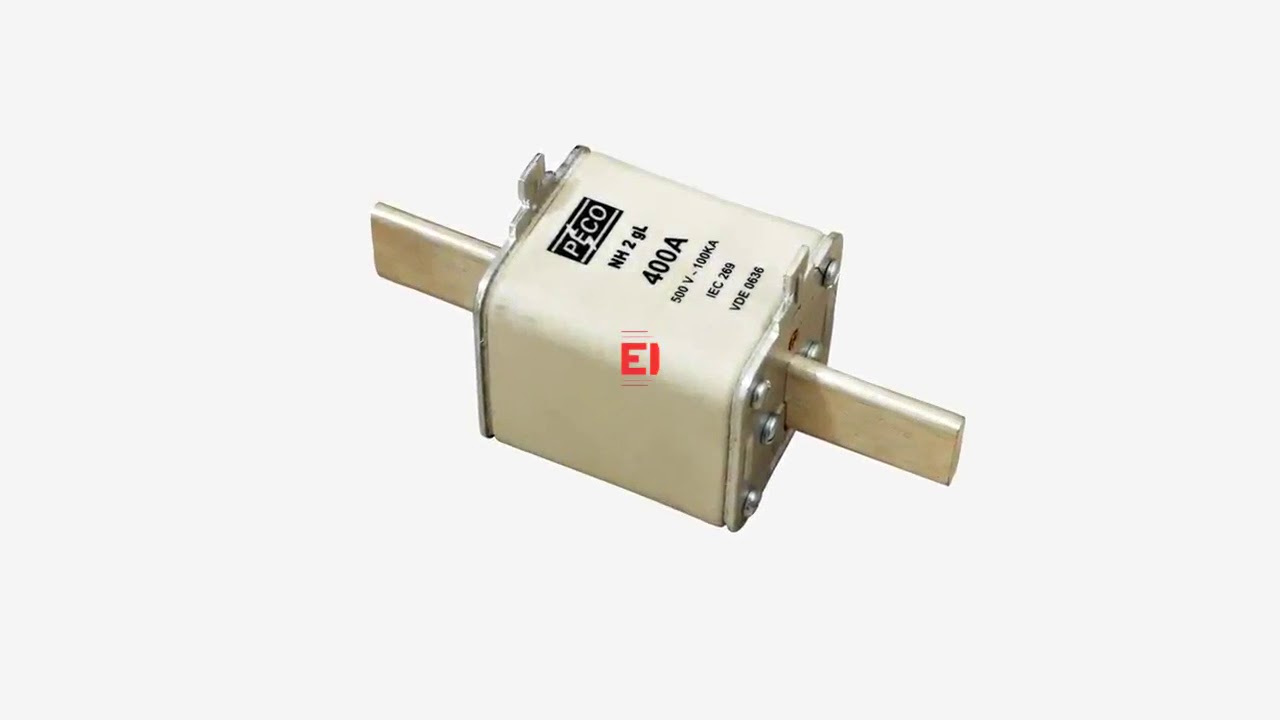

A high rupturing capacity fuse is an HRC fuse in which the fuse wire temporarily conducts a short circuit current. It blows off if the circuit develops a fault. Glass or other forms of chemical components are used to make the HRC fuses.
The fuse’s container must be tightly closed to prevent moisture. The ceramic enclosure is constructed at both ends of the fuse using metal caps that are joined together with fusible silver wire. Its cell has a portion of a wire-enclosed chamber.
The HRC fuse is reliable and features a function that reduces break time when the fault current is high. It goes vice versa. The break time is lengthy when the fault current is low.
Characteristics of HRC Fuse:
When a fuse melts, it produces heat due to I2RF. RF stands for fuse resistance. If the current flow through the fuse element increases, in that case, more heat is produced. Therefore, a fuse element will melt more quickly for a large fault current than for a smaller fault current. As a result, fuse characteristics refer to the relationship between the time-current of the fuse. Therefore, it is helpful for a particular circuit’s fuse.
Types of HRC Fuses
Let’s discuss the three types of HRC Fuses.
1- NH Type Fuse
2- Din Type Fuse
3- Blade Type
1- NH Type Fuse
NH Type Fuse provides security from short circuits. It also protects against overloading of low and medium voltage. In addition, these fuses protect equipment such as motor starters. These fuses are in a solid dimension and have a lighter weight.
2- Din Type Fuse
Din Type Fuses are available in a wide range of rated currents. It is wielded in various fields for many reasons, including its ability to operate at different temperatures. These serve to insulate the transformer and are convenient at different voltage levels. In addition, it has exceptional cleaning capabilities for honing the short-circuit act. This fuse is particularly for transformers, gas-insulated switchgear, feeder sectionalizing, and air and mining.
3- Blade Type Fuse
Blade Type Fuse has a plastic surface and two metal covers that fit within the socket. These are typically used in cars to protect against wiring and short-circuiting and to provide backup safety in motors.
How does an HRC fuse work?
The working of an HRC fuse includes passing a certain current without opening. It is known as a fuse-rated current. Heat gets produced when an electric current passes across these element bridges or limits. The fuse elements transmit the current until the heat transfer balances.
When the heat transfer imbalances because of short-circuiting or overloading, the heat generated is more than the percentage of heat dissipated. The temperature rises because of the limitations or weak points of the fusible element.
When the temperature rises to the point the fusible element reaches its melting point, the element bridges begin melting and breaking. It interrupts the flow of current via the fuse to the circuit.
The conductor inside HRC fuses gets heated when the current passes through them. When the current exceeds a particular threshold, the conductor gets melted and quickly insulates the load from the supply. The sand filler substance, however, quenches or extinguishes the arc that the fuse generates during this time.
HRC fuses have status indicators that show whether the fuse is open or closed.
Visit IndoAsian for HRC fuses and more!







